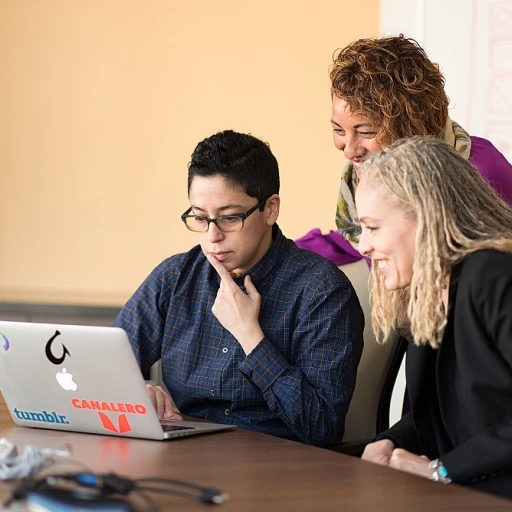The Role of Technology in Modern HR
Enhancing the Workplace with Technology
In today’s rapidly evolving business landscape, companies are embracing technology as a critical tool in transforming their workplaces. A smarter workplace is characterized by the integration of various technological solutions designed to improve efficiency, productivity, and employee engagement. Workplace technology, smart technology, and smart office systems all play a pivotal role in creating an environment that adapts to the needs of employees. For instance, desk booking systems make it easier for employees to find and reserve workspaces, especially within hybrid work environments. These platforms promote an intelligent workplace by optimizing office space, ensuring comfort, and improving workflow efficiency. The move toward a digital workplace also includes utilizing digital signage and meeting room management systems that enhance communication and collaboration within the office. By implementing such tools, businesses gain flexibility in managing office dynamics and employee interactions. This not only assists in creating a more personalized employee experience but also supports continuous learning and development opportunities. Moreover, being data-driven is no longer optional. Companies are reading data not just through traditional systems but with advanced workplace technology that helps in making informed decisions. This approach allows companies to respond faster to changes, predict future trends, and meet employee needs more effectively. Thus, creating a simply smarter and more adaptive work environment becomes possible. Ultimately, by leveraging intelligent technologies, smart workplaces are better positioned to be inclusive, flexible, and conducive to innovation, paving the way for a future where the employee experience is at the forefront of work management strategies.Personalized Employee Experiences
Crafting Employee Journeys with Technology
In navigating toward a more intelligent workplace, understanding and enhancing personalized employee experiences is key. As companies pivot to meet the dynamic needs of modern employees, leveraging workplace technology becomes indispensable. Digital tools serve as the backbone, supporting employees through various stages of their professional journey. The integration of smart technology in the workplace empowers organizations to create tailored solutions for their workforce. Employee engagement flourishes through platforms that allow flexibility and customization, from desk booking to digital signage. These systems elevate the employee experience by making the interaction with the work environment more fluid and intuitive. A smarter workplace isn't just about aesthetics and efficiency. It's about providing an environment that resonates with each employee's unique needs. The hybrid work model enriches these experiences further by offering flexibility in how and where employees work, thus blurring the lines between traditional office space and remote operation. By adopting smart workplace solutions, companies can foster collaboration across teams, regardless of physical locations. Meeting rooms equipped with advanced collaboration tools, like video conferencing systems, make it easier for employees to connect and share ideas seamlessly. Real-time data from these tools can feed into management systems, offering insights that help refine employee experiences over time. In essence, the objective is to create a simply smarter workplace where employees feel valued and supported. Tailored journeys guided by intelligent solutions not only enhance individual satisfaction but also boost overall employee engagement. This, in turn, contributes to the harmonious blend of a productive office culture in an ever-evolving work environment.Flexible Work Environments
Embracing Flexibility through Technology
The modern workplace is undergoing a significant transformation as companies adapt to the demands of a more agile, intelligent work environment. The transition to a hybrid work model is a testament to the growing need for flexibility, which is powered by advanced workplace technology solutions. As employees navigate between home and office spaces, the implementation of smart tools such as booking software, desk booking systems, and digital signage has become paramount. These tools not only assist in managing office space efficiently but also enhance employee experience by creating a more fluid and dynamic workspace.
Technology plays a crucial role in supporting a flexible work environment. For instance, digital collaboration tools enable employees to connect and work together seamlessly, regardless of their location. This technology ensures that hybrid workplaces remain productive and efficient by facilitating communication and sharing of information in real-time, thereby fostering smarter workplaces.
Moreover, flexible work environments allow companies to leverage data effectively. By utilizing management systems, businesses can analyze patterns related to space usage and employee engagement, thus facilitating data-driven decisions to optimize the physical layout and digital infrastructures of their offices. This approach supports the goal of simply smarter workspaces, where smart technology aids in the comfort and efficiency of the workforce.
In a world where the office is not the sole workspace, companies must adapt to a more fluid setup. The smarter workplace embraces hybrid work, providing employees with the autonomy to choose where they work best, leading to increased satisfaction and productivity. This shift necessitates that the focus not only be on location but also on creating a cohesive experience, driven by intelligent systems that cater to employee preferences and needs.
As organizations continue to evolve, the goal remains clear: to develop work environments that are adaptive, inclusive, and intelligent, ensuring that technology acts as a bridge to enable flexibility and enhance the overall employee experience.
Continuous Learning and Development
The Continuous Evolution of Learning Environments
In the ever-evolving landscape of workplaces, the shift towards continuous learning and development is a defining characteristic of the intelligent workplace. Today’s employees demand more than just a static, routine job—they crave opportunities to grow and adapt. This transformation is not only a key driver for employee engagement but also essential in maintaining a competitive edge in the market.
Companies are progressively leveraging workplace technology to facilitate this shift. Tools such as digital learning platforms and on-demand training programs enable a more personalized employee experience. These platforms use data and smart technology to tailor content to individual learning styles and career aspirations, ensuring that each team member can excel in their role and pursue growth opportunities.
The concept of a hybrid work environment plays a pivotal role in this transformation. With the adoption of hybrid work, office spaces are becoming collaborative hubs where meeting rooms and workspaces are equipped with smart office solutions such as desk booking software and digital signage that simplify workflows and enhance collaboration. These tools provide a seamless blend of virtual and physical learning environments, adapting to varied learning needs whether employees are on-site or working remotely.
- Integrating smart technologies can provide real-time feedback to employees, helping them track their progression and understand areas for improvement.
- Advanced data analytics are used within learning management systems to assess the effectiveness of training programs and adapt them to better suit employee needs.
The intelligent workplace is thus not just about providing the tools necessary for the work, but also about fostering a culture where continuous development is encouraged and nurtured. By adopting a strategic approach to learning and development, companies can create a smarter workplace that attracts and retains talent, ultimately leading to sustainable business success.












